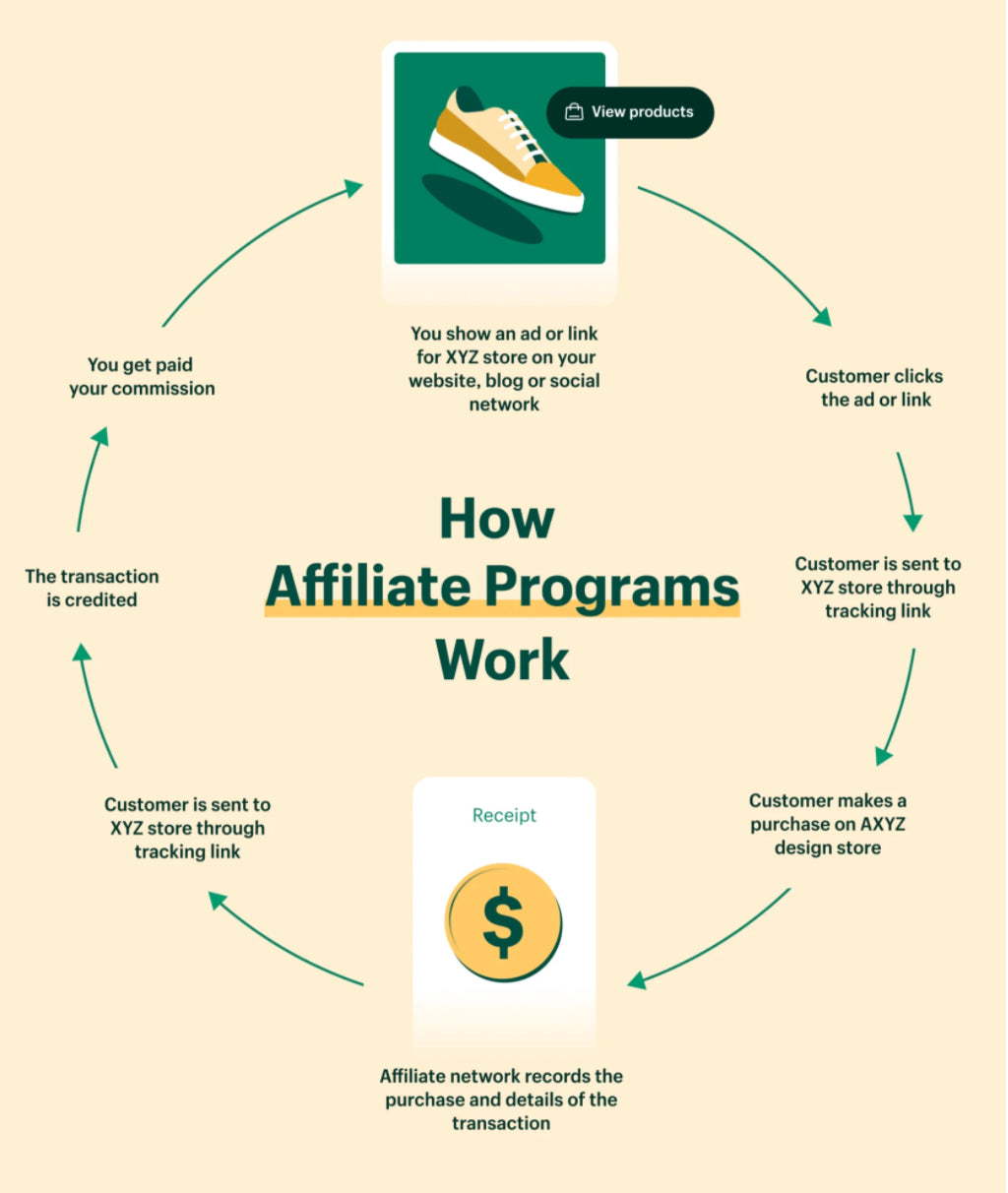
So, you’ve heard about this thing called affiliate marketing and you’re wondering what it’s all about, right? Well, you’re in the right place! In this article, we’re going to break down the basics of affiliate marketing and help you understand how it works.
In the world of online commerce, affiliate marketing has become a popular way for individuals and businesses to earn money by promoting other people’s products or services. It involves partnering with a company or a brand and earning a commission for each sale or lead generated through your referral. Sounds interesting, right? Well, in this article, we’ll delve deeper into how affiliate marketing works, the different roles involved, and the potential benefits and challenges you may encounter. Whether you’re a beginner looking to dive into the world of affiliate marketing or someone who wants to expand their knowledge, this article will give you a solid understanding of the basics and set you on the right path. So, let’s get started and learn more about this exciting opportunity! Affiliate marketing is a popular method of earning income online. It is a performance-based marketing strategy in which affiliates promote products or services on behalf of a company and earn a commission for every sale or lead generated through their referral. It is a win-win situation for both the affiliate and the company, as the affiliate gets a percentage of the sale while the company gains new customers.
Benefits of affiliate marketing
One of the main Benefits of affiliate marketing is the opportunity to earn passive income. Once you set up your affiliate links and start promoting products, you can continue earning commissions even when you’re not actively working on your campaigns. This allows you to make money while you sleep.
Another advantage of affiliate marketing is that you don’t need to create your own products. As an affiliate, you’re simply promoting other people’s products or services. This eliminates the need for product development and manufacturing, saving you time and effort.
Affiliate marketing also offers a wide range of products to promote. There are countless affiliate programs available in various niches, so you can choose products that align with your interests and target audience. This enables you to promote products that you genuinely believe in and would recommend to others.
To get started with affiliate marketing, you need to find a suitable affiliate program. There are numerous affiliate networks and individual companies that offer affiliate programs. Research and choose one that suits your niche and has a good reputation.
Once you’ve joined an affiliate program, you can start choosing the right products to promote. It’s important to select products that are relevant to your audience and have a high conversion rate. Consider the quality of the product, the commission structure, and the demand in the market.
After selecting your products, you can begin promoting them through various channels. This can include your website, blog, social media platforms, email marketing, and paid advertising. The key is to reach your target audience and convince them to make a purchase or take the desired action.
Different types of affiliate marketing
Affiliate marketing can be classified into three main types:
Pay-per-click (PPC): In this model, affiliates earn a commission every time a visitor clicks on their affiliate link, regardless of whether they make a purchase or not.
Pay-per-lead (PPL): With this model, affiliates are paid for every lead they generate. This could be in the form of a user signing up for a newsletter, filling out a form, or downloading an app.
Pay-per-sale (PPS): This is the most common type of affiliate marketing. Affiliates earn a commission when a sale is made through their referral link.
Choosing the right affiliate program
When choosing an affiliate program, it’s important to research the reputation and credibility of the program. Look for reviews and testimonials from other affiliates to ensure that the program is trustworthy and pays its affiliates on time.
Reviewing the commission structure is also crucial. Some programs offer a fixed rate per sale or lead, while others offer a tiered commission structure. Consider your earning potential and the value of the products or services you’ll be promoting.
Furthermore, it’s essential to consider the product niche and target audience. Choose a program that aligns with your niche and has products that resonate with your audience. This will increase your chances of success and generate higher conversions.
Building a successful affiliate marketing website
To build a successful affiliate marketing website, you need to focus on several key aspects. First, select a niche market that you’re passionate about and has potential for profitability. This will allow you to establish yourself as an authority in that niche and attract a targeted audience.
Next, create high-quality content that provides value to your audience. This could include informative blog posts, product reviews, tutorials, and comparison guides. The goal is to build trust and establish yourself as a reliable source of information.
In addition to creating great content, it’s important to optimize your website for search engines. This involves using relevant keywords, optimizing your meta tags, improving site speed, and building quality backlinks. This will help improve your website’s visibility in search engine results and attract organic traffic.
Creating effective affiliate marketing campaigns
To create effective affiliate marketing campaigns, you need to understand your target audience. Research their needs, interests, and pain points, and tailor your marketing messages accordingly. This will make your promotions more appealing and increase your chances of conversions.
Additionally, it’s crucial to utilize various marketing channels to reach your audience. This can include social media marketing, email marketing, content marketing, and paid advertising. Diversifying your marketing efforts will allow you to reach a wider audience and maximize your chances of success.
Furthermore, tracking and analyzing campaign performance is key to optimizing your strategies. Use analytics tools to measure the performance of your campaigns, such as click-through rates, conversion rates, and return on investment. This will enable you to identify what’s working and what needs improvement.
Successful affiliate marketing strategies
Building strong relationships with affiliate partners is essential for long-term success. Communicate regularly, provide feedback, and collaborate on promotional campaigns. This will help you establish mutually beneficial partnerships and increase your chances of success.
Providing valuable and informative content is also crucial. Instead of simply promoting products, focus on educating your audience about the benefits and features of the products or services you’re promoting. This will build trust and credibility, making your audience more likely to make a purchase.
Offering exclusive deals and promotions can also give you a competitive edge. Negotiate with the affiliate program to secure special discounts or bonuses for your audience. This will make your offers more enticing and increase your chances of conversions.
Challenges of affiliate marketing
While affiliate marketing offers numerous benefits, it also comes with its fair share of challenges. One of the main challenges is increased competition. As more people join affiliate programs, it becomes harder to stand out and attract customers. To overcome this, focus on niche markets and find unique ways to promote products.
Generating consistent traffic can also be a challenge. To overcome this, focus on building a loyal audience and optimizing your marketing efforts. Experiment with different traffic sources, such as social media, SEO, and paid advertising, to diversify your traffic channels.
Adapting to changing market trends is another challenge. The online marketplace is constantly evolving, with new products and trends emerging. As an affiliate marketer, it’s essential to stay up-to-date with market trends and adjust your strategies accordingly.
Conclusion
Affiliate marketing is a lucrative opportunity for individuals looking to earn income online. It offers the chance to earn passive income, promote a wide range of products, and leverage various marketing channels. By understanding the basics of affiliate marketing and implementing effective strategies, you can build a successful affiliate marketing business and achieve your financial goals. Start by identifying a suitable affiliate program, choosing the right products, building a high-quality website, and creating engaging campaigns. Remember to focus on building relationships with affiliates, providing valuable content, and adapting to market changes. With dedication and perseverance, you can thrive in the world of affiliate marketing and generate a sustainable income stream. So, go ahead and take the plunge into the exciting world of affiliate marketing.





